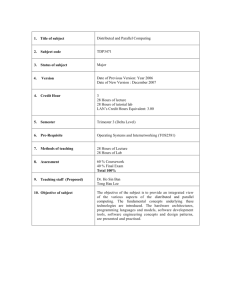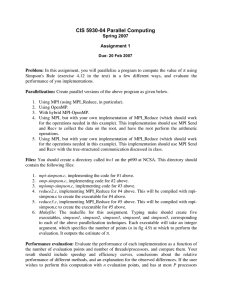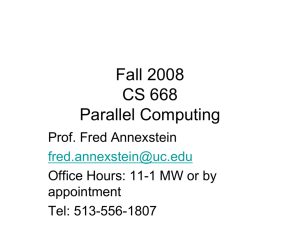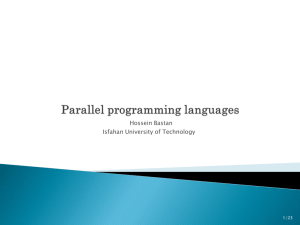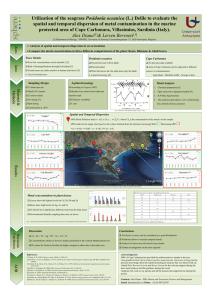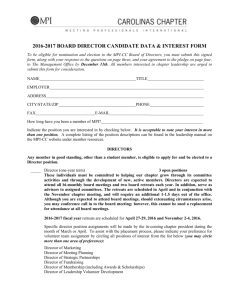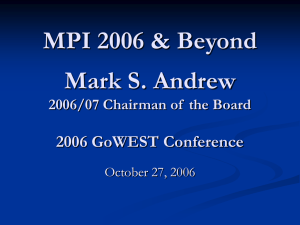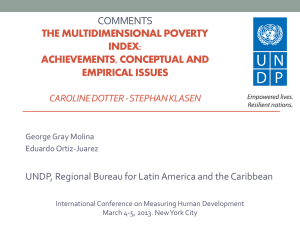MP6 - Course Website Directory
advertisement
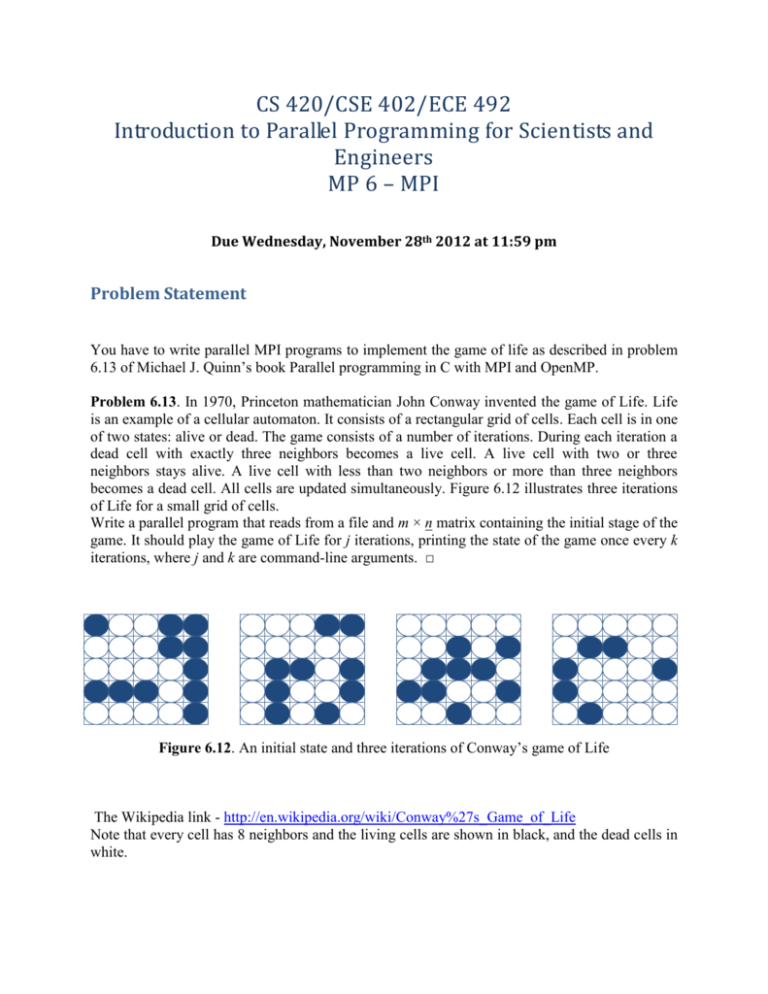
CS 420/CSE 402/ECE 492 Introduction to Parallel Programming for Scientists and Engineers MP 6 – MPI Due Wednesday, November 28th 2012 at 11:59 pm Problem Statement You have to write parallel MPI programs to implement the game of life as described in problem 6.13 of Michael J. Quinn’s book Parallel programming in C with MPI and OpenMP. Problem 6.13. In 1970, Princeton mathematician John Conway invented the game of Life. Life is an example of a cellular automaton. It consists of a rectangular grid of cells. Each cell is in one of two states: alive or dead. The game consists of a number of iterations. During each iteration a dead cell with exactly three neighbors becomes a live cell. A live cell with two or three neighbors stays alive. A live cell with less than two neighbors or more than three neighbors becomes a dead cell. All cells are updated simultaneously. Figure 6.12 illustrates three iterations of Life for a small grid of cells. Write a parallel program that reads from a file and m × n matrix containing the initial stage of the game. It should play the game of Life for j iterations, printing the state of the game once every k iterations, where j and k are command-line arguments. □ Figure 6.12. An initial state and three iterations of Conway’s game of Life The Wikipedia link - http://en.wikipedia.org/wiki/Conway%27s_Game_of_Life Note that every cell has 8 neighbors and the living cells are shown in black, and the dead cells in white. Students registered for 4 credits are also required to write a parallel MPI program for the problem 4.12 (Simpson’s 1/3rd rule for integration) from Michael J. Quinn’s book Parallel programming in C with MPI and OpenMP: Problem 4.12. Simpson’s rule is a better numerical integration algorithm than the rectangle rule b (presented in class) because it converges more quickly. Suppose we want to compute f ( x )dx . a We divide the interval [a , b] into n subintervals, where n is even. Let xi denote the end of the ith interval for 1 i n and let x0 denote the beginning of the first interval. According to Simpson’s Rule: b n /2 1 f ( x ) dx f ( x ) f ( x ) 4 f ( x2i 1 ) 2 f ( x2i 0 n a 3n i 1 Write an MPI program to compute the value of using Simpson’s Rule: f ( x ) 4 / (1 x 2 ), a 0, b 1, n 50 Deliverables For both these problems, make a single report file named README. In this file: Explain the parallelization strategy that you have used The command that you used to execute your program. Timings that you obtain for 2-40 MPI processes for both the problems. Speedup curve for both the problems Efficiency curve for both the problems Language and Machines Use C language with MPI to write your programs. We will use the MTL machines to test the performance. Using MPI on MTL MPI is made available to you on the MTL machines at /home/dapa/mpich2-install /bin/. To use MPI, issue the command export PATH=/home/dapa/mpich2-install/bin:$PATH This script will point your PATH variable to the appropriate directory. This command needs to be executed only once. Then you can use the following command to compile your program – mpicc –o executable_name file_name.c You can execute the programs (if your executables are in the current directory) as follows mpirun –n #processes ./executable_name <paramaters> Test your programs for 2-40 MPI processes.
